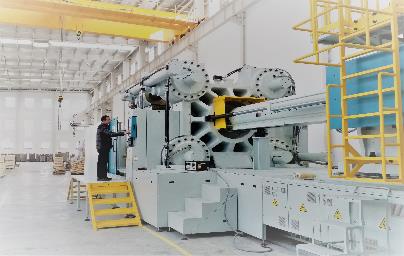A very popular manufacturing technique known as Structural Foam Molding involves injecting a thermoplastic substance into a mold cavity, where it solidifies and adopts the shape of the mold.
Structural foam molding uses a low-pressure approach to manufacture lightweight, dependable products with thicker walls and greater stiffness, unlike standard injection molding, which uses high-pressure and high-temperature techniques to create solid plastic parts.
Polymers are utilized in structural foam molding to produce robust, light, and dimensionally stable products.
Ahead in this article, we'll examine the various polymers widely used by Structural Foam Molding Companies and emphasize their features, benefits, and uses.
Understanding Polymers in Structural Foam Molding
Let's take a deeper look at some of the essential qualities and traits of polymers that make them suitable for this manufacturing method before we start exploring the various types of polymers utilized in structural foam molding.
1. Polymers are perfect for a variety of manufacturing applications because of their ability to be molded and sculpted into different shapes. Moreover, they can be altered to obtain specific qualities like stiffness, strength, flexibility, and resistance to chemicals, heat, and UV rays.
2. Polymers are perfect for building structural components that must sustain severe stress and strain since they are lightweight, strong, and versatile. Moreover, polymers exhibit excellent dimensional stability, which allows them to maintain their size and shape despite shifting environmental factors.
3. Cost-effectiveness is another major benefit of polymers, especially compared to other materials like metals or ceramics. Also, because they need less energy to produce, they are more environmentally friendly and sustainable.
It's crucial to remember that not all polymers are made equal and have unique features and constraints. Selecting the appropriate polymer for your particular project is, therefore, essential.
Most Common Polymers Used in Structural Foam Molding:
There are various alternatives available when choosing a polymer for structural foam molding, each with special benefits and qualities. The most commonly used polymers for molding structural foam are listed below:
Polyethylene (PE): A Popular Polymer for Structural Foam Molding
1. The durability, flexibility, and low cost of polyethylene make it a versatile and frequently used polymer.
2. It is frequently used in structural foam molding processes for things like toys, packaging, and automobile components.
3. Customized polyethylene can be made to have particular qualities like high rigidity, impact resistance, and UV resistance.
Polypropylene (PP): A Versatile Polymer for Structural Foam Molding
1. Another popular polymer that is valued for its adaptability, affordability, and strong mechanical characteristics is polypropylene.
2. It is utilized in several structural foam molding projects for things like furniture, appliances, and automotive parts.
3. With proper modifications, polypropylene can be made to have particular qualities like high rigidity, impact resistance, and chemical resistance.
Acrylonitrile Butadiene Styrene (ABS): A Strong Polymer for Structural Foam Molding
1. A thermoplastic polymer known as Acrylonitrile Butadiene Styrene (ABS) is renowned for its sturdiness, heat resistance, and durability.
2. It is frequently utilized in structural foam molding projects for things like toys, electronic housings, and automobile parts.
3. With the right customization, ABS may be made to have particular qualities like high impact resistance, chemical resistance, and dimensional stability.
Polycarbonate (PC): A Durable Polymer for Structural Foam Molding
1. Clearness, impact resistance, and high-temperature resistance are all characteristics of a strong and long-lasting polymer known as polycarbonate.
2. It is frequently used in structural foam molding processes for things like vehicle parts, medical equipment, and housings for electrical devices.
3. Customized polycarbonate can be made to have particular qualities like flame retardancy, chemical resistance, and UV resistance.
Nylon (PA): A Tough Polymer for Structural Foam Molding
1. Strong, resistant to abrasion, and having a low friction coefficient, nylon is a resilient and long-lasting polymer.
2. It is frequently utilized in structural foam molding projects for things like gears, bearings, and automobile components.
3. Customized nylon can be made to have particular qualities like high stiffness, impact resistance, and chemical resistance.
Choosing the Right Polymer for Your Structural Foam Molding Needs:
There are several factors to consider when choosing polymers for structural foam molding projects.
Some of the most significant ones are listed below:
Performance Requirements: Selecting a polymer that satisfies your particular performance needs is crucial because different polymers have specific strengths and weaknesses.
Environmental Aspects: What environmental factors will your component face? For instance, will it be subjected to harsh chemicals, high temperatures, or UV radiation? Ensure that the polymer you select can survive the conditions to which it will be exposed.
Cost: Because polymers vary in price, it's advisable to select one that is both cost-efficient and fits your performance criteria.
Manufacturing Process: What manufacturing procedure will be applied to the part's production? You should select a polymer that is suitable for the manufacturing process because different polymers require different processing conditions.
Part Design: You should select a polymer that is suitable for the part design because different polymers have different restrictions and can change the design of the part.
Final Thoughts
Selecting the right polymer for your structural foam molding needs is crucial to achieving the desired performance, cost-effectiveness, and sustainability.
Consider the properties and advantages of different polymers and the specific performance requirements, environmental conditions, cost, manufacturing process, and part design when choosing the right polymer for your structural foam molding needs.
To obtain the desired performance, cost-effectiveness, and sustainability, you ought to choose the most suitable polymer for your structural foam molding project.
When selecting the best polymer for your structural foam molding needs, make sure you consider the features and benefits of various polymers, as well as the specific performance requirements, environmental factors, cost, manufacturing process, and component design.
To learn more about the importance of utilizing the right polymer, consult with the experts of one of the most Structural Foam Molding Companies today.
You are just a call away from availing flawless injection molding solutions from iMold USA, LLC.


No comments yet